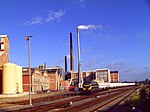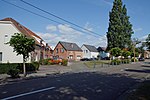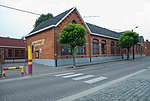Groezrock

Groezrock was an annual music festival that took place in Meerhout, Belgium. It started as a small rock and pop festival with one stage and a few hundred people attending, but evolved into a large punk rock/hardcore punk festival, with attendances exceeding 30,000. The festival had one stage until 2003, when it added a second stage called Back-to-Basics, which was reserved for more hardcore-oriented bands. Since 2006 the festival has taken place over multiple days, and grew to three stages in 2009 and four stages in 2012. It was announced in October 2017 that the 2018 edition of Groezrock would not be taking place in the Spring, and would instead be an indoor festival in the autumn. The festival have stated that they will be "back in full force" with the usual format in 2019.
Excerpt from the Wikipedia article Groezrock (License: CC BY-SA 3.0, Authors, Images).Groezrock
Oude Baan,
Geographical coordinates (GPS) Address Nearby Places Show on map
Geographical coordinates (GPS)
| Latitude | Longitude |
|---|---|
| N 51.109773 ° | E 5.104576 ° |
Address
Oude Baan 114
2450
Antwerp, Belgium
Open on Google Maps









